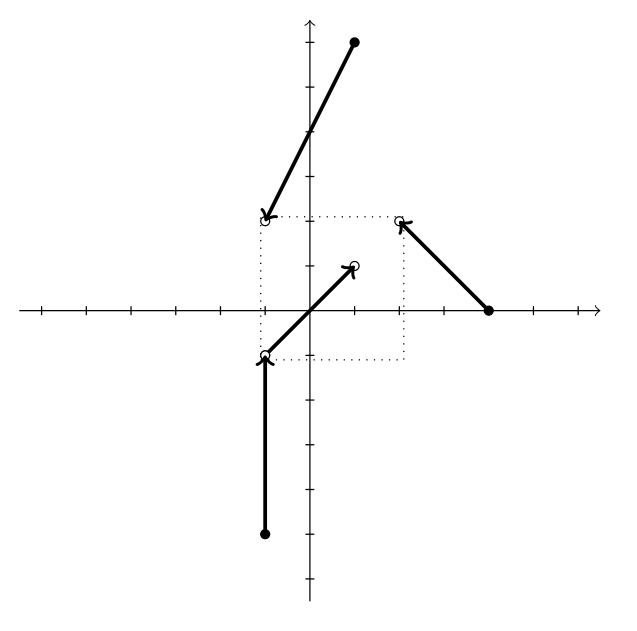
Zadanie Świetliki (swi)
Pomóż nam usprawnić bazę zadań!
Glowworms
Memory limit: 128 MB
Early morning Byteasar woke up and went fishing in the Bytic Lake. At some moment he spotted a group of glowworms that were flying above the surface of the lake. Byteasar really enjoyed this view and decided to take a photo of the glowworms.
Photos made by Byteasar's camera have the shape of a square. Before a photo is taken, Byteasar decides on the vertical and horizontal alignment of the photo and zooms in or out. He never rotates the camera, otherwise the photo would turn out crooked.
Byteasar wants all the glowworms to be on the photo. He would like to adjust the parameters of the photo, in particular the camera zoom, so that the glowworms appear as big as possible. He is even willing to wait for a while until the glowworms form the best configuration for the photo to be taken.
We simplify things a bit and assume that all the glowworms are flying in a plane that is parallel to the camera sensor and that each glowworm has a constant velocity vector.
Input
The first line of input contains one integer  (
( ),
the number of glowworms.
Each of the following
),
the number of glowworms.
Each of the following  lines contains four integers
lines contains four integers  ,
,  ,
,
 ,
,  (
( )
that represent the initial position
)
that represent the initial position  and the velocity vector
and the velocity vector  of the
of the  -th glowworm.
In other words, after
-th glowworm.
In other words, after  units of time the
units of time the  -th glowworm has coordinates
-th glowworm has coordinates
 .
All points are specified in a rectangular coordinate system with axes
parallel to the sides of the camera sensor.
.
All points are specified in a rectangular coordinate system with axes
parallel to the sides of the camera sensor.
Output
Your program should output one line with a non-negative real number  - the minimal side length of a square that can be used to cover all the glowworms
at some moment of time (the sides of the square must be parallel to the axes
of the coordinate system).
Your result may differ from the exact result by at most
- the minimal side length of a square that can be used to cover all the glowworms
at some moment of time (the sides of the square must be parallel to the axes
of the coordinate system).
Your result may differ from the exact result by at most  .
.
Example
For the input data:
4 4 0 -1 1 1 6 -1 -2 -1 -5 0 2 -1 -1 1 1
the correct result is:
3.00000000000000000000

Explanation of the example:
The figure shows the initial positions of the glowworms and their positions
after 2 units of time.
A  square that covers all the glowworms at the time
square that covers all the glowworms at the time  is also shown.
\end{minipage}
\begin{minipage}{8cm}
is also shown.
\end{minipage}
\begin{minipage}{8cm}
Kontakt
In the event of technical difficulties with Szkopuł, please contact us via email at [email protected].
If you would like to talk about tasks, solutions or technical problems, please visit our Discord servers. They are moderated by the community, but members of the support team are also active there.

 English
English